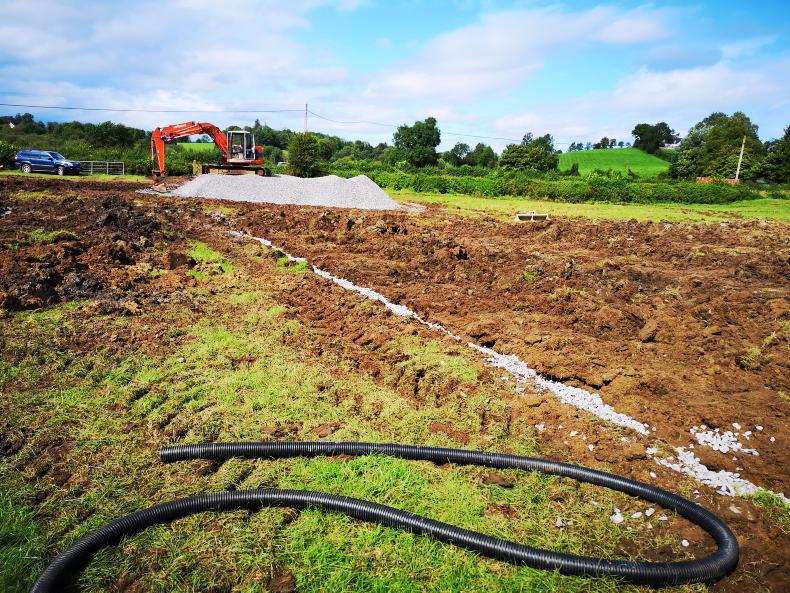A lot of visitors to my farm come to the conclusion that I operate on dry land.
However, nothing could be further from the truth. I do have some dry areas, but I also have other pieces of land that are drained and therefore give the appearance of being dry.
All of my land has been drained at some stage during my lifetime, and some of it was drained even before that.
My father did a lot of work in the 70s and early 80s, so it means that pipework is now 40 years old or more.
A lot of it was done under a grant scheme, and my father would have spent very little money. From what I can remember, the contractors were actively pursuing farmers to get them to do some drainage work.

I’m not sure this was such a good thing. Having said that, most of the drainage worked well for a good few years, but it started to break down over the past 10 years or so and much of it is now in need of repair.
I think that has a lot to do with travelling the ground with heavy machinery in wet conditions. When the drains get blocked it seems to be worse than if you had no drains at all.
I try to do some remedial work to the damaged drains every year, assuming I have the money and the weather is on our side, but it’s not easy as everything, particularly stones, has got very expensive and there is no grant for this kind of work.
Unfortunately, there were no maps drawn of where the drains were put and my father has since passed away, so it’s difficult to know where the old drains are. I was only very young when most of the work was done.
Fix up
I have started to try and fix up another field this year. As usual, we are coming across old drains which are only about 18in into the ground. It is little wonder that modern machinery has been damaging these.

It’s strange though, because from what I can remember I thought that they were put in deeper than this. Have they risen up or has the ground dried out around them and shrunk? I don’t know the answer, but maybe it’s a combination of both.
The other thing that puzzles me is that a lot of the main drains are only 3in pipes and the feeder drains are 2in pipes, so there isn’t much scope if sediment builds up inside. In addition, they piped all the sheughs, and this seems to have been a complete disaster. Roots have grown up through the pipes and completely blocked them.
Stone drains
However, it should also be pointed out that I have discovered some really good drainage. There are old stone drains up to 3ft deep and still running perfectly. They would have all been dug with a spade, with two side stones and a cap stone inserted. Installing these would have been slow, hard work, but it has stood the test of time and modern machinery. It’s wonderful when you come to one of these and there comes a flood of water out of it.
Current work
The current work being done involves putting in 6in main drains with 3in feeder drains, all a good 3ft deep. I am trying to direct all existing drains into these.
Our ancestors had a good knack of finding where the water was and knew how to get it off the fields. Whether I am doing it right now, I simply don’t know. Will it stand the test of time and the machinery that will come along in the future? For the moment it is letting water away.
